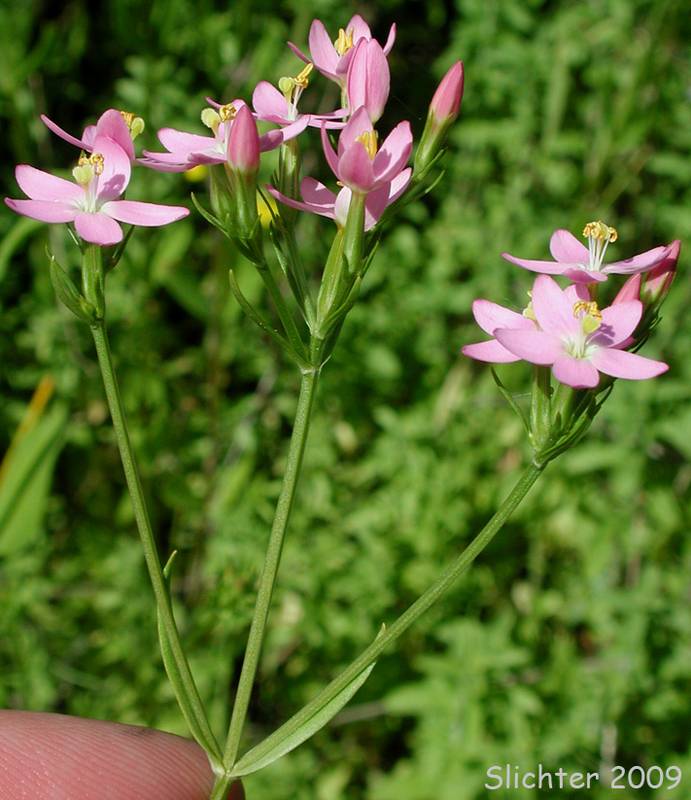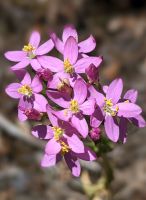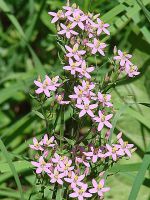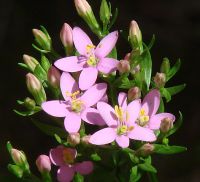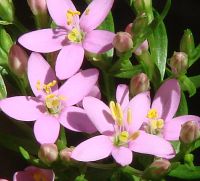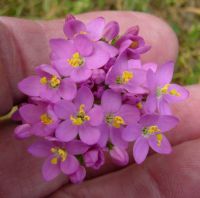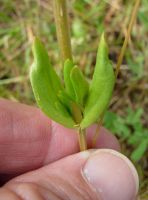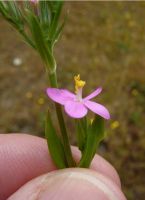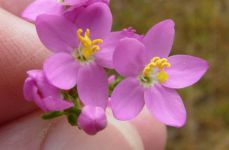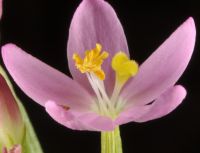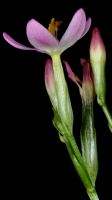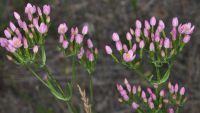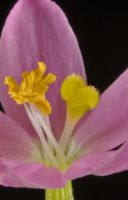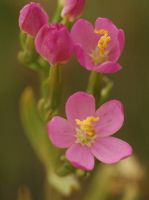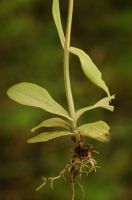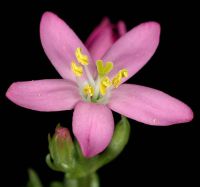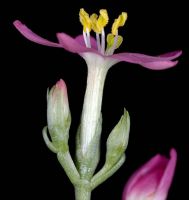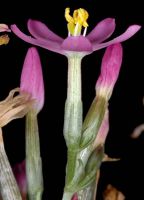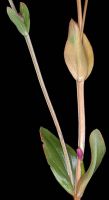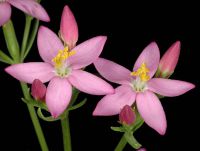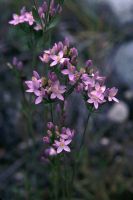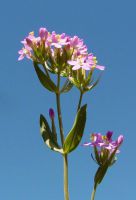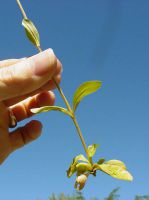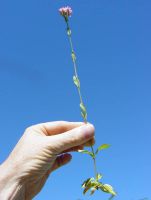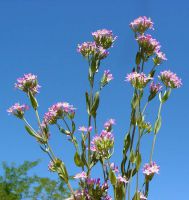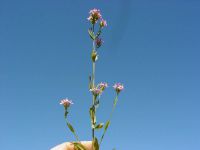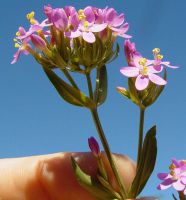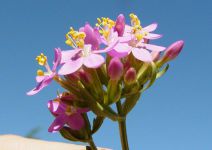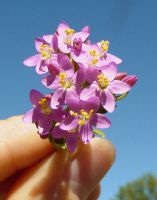Distribution: Chiefly west of the Cascades crest in Washington; British Columbia to California east to Montana; also in eastern North America.
Habitat: Wet meadows, prairies, grasslands, roadsides, and wasteland.
Flowers: June-August
Origin: Introduced from Europe
Growth Duration: Annual, Biennial
Conservation Status: Not of concern
Pollination: Self-pollination, bees, flies
Annual, glabrous herbs, the 1-many stems simple or branched from the base, 1-5 dm. tall.
Basal leaves several, often forming a rosette, sessile, obovate or oblong-oblanceolate, 1.5-4 cm. long, rounded, 3- to 5-veined, the veins nearly parallel; cauline leaves opposite, similar to the basal, reduced, narrower and pointed upward.
Flowers many in crowded cymes, sessile, each with 2 subtending bracts; calyx 4-6 mm. long, the 5 lobes slender, acute; corolla yellowish to salmon-red, the slender tube twice the length of the calyx, the 5 lobes widely flaring, 4-6 mm. long, oblong-lanceolate; stamens attached midway in the corolla tube, slightly exerted, unequal; anthers conspicuously twisted; ovary superior.
Capsule 2-valved, slender, about 1 cm. long.
Publication: Danm. Holst. Fl. 2: 75-77. 1800.
PNW Herbaria: Specimen records of Centaurium erythraea in the Consortium of Pacific Northwest Herbaria database.
WA Flora Checklist: Centaurium erythraea checklist entry.
OregonFlora: Centaurium erythraea information.
E-Flora BC: Centaurium erythraea atlas page.
CalPhotos: Centaurium erythraea photos.
USDA Plants: Centaurium erythraea information.


